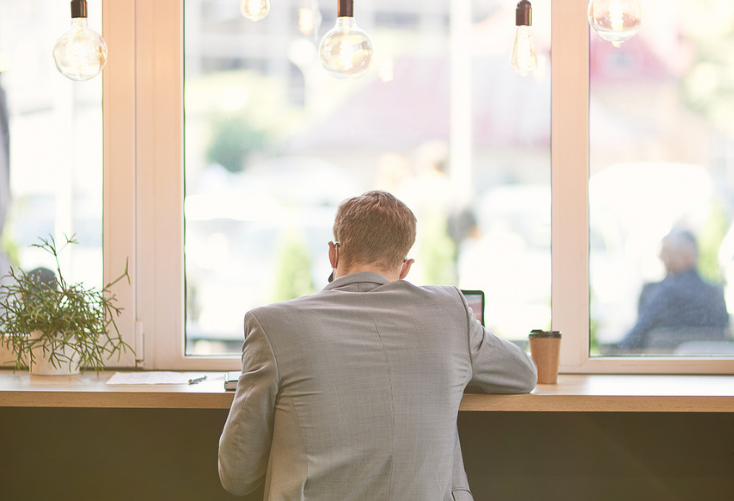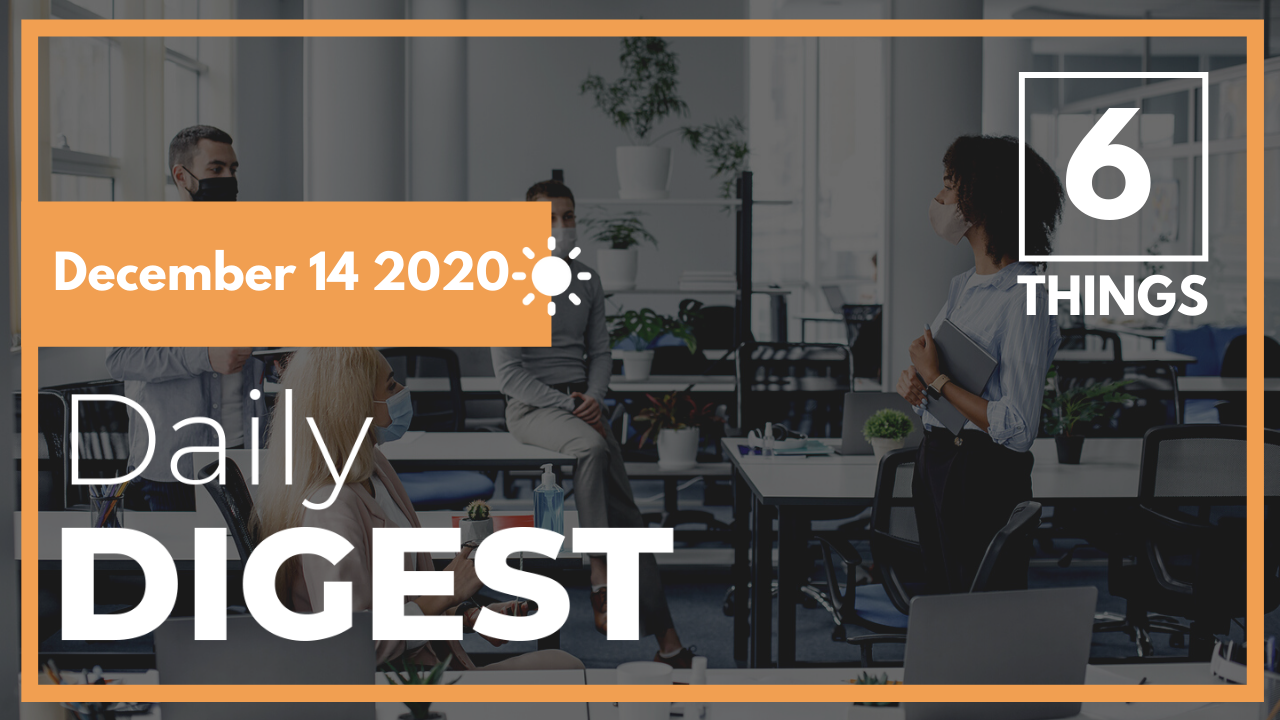Hand selected flexible workspace news from the most reliable sources to keep you ahead of the pack. We find all the latest news, so you don’t have to. Morning and afternoon updates. Stay in the know.
Here’s what you need to know today:
- What To Expect From The Future Of The Workplace NEW
- Manhattan Sees Record Office Space Availability NEW
- What The Next “New Normal” Will Look Like NEW
- Google Pushes Back Return To The Office
- Looking Towards The Post-pandemic Workplace
- The Problem With Hybrid Work Arrangements
What To Expect From The Future Of The Workplace
One respondent to Inside Housing’s recent survey of housing associations stated that his workplace had a “flexible, agile culture” despite only 20-25% of staffers working from home at least one day each week.
This proves how quickly this year has accelerated incoming workplace trends, so where do we go from here?
“We were already starting to work in a very agile way prior to COVID hitting everybody,” said Nina Evison, head of people at Yorkshire Housing. “So for a number of our customer-facing roles we’d moved away from people being based in a traditional office into a more agile way of working. But for a number of our colleagues who were based in our head office in Leeds, most of the time most of those people were still working in quite a traditional way, and we were just taking steps towards what an agile, more flexible future might look like.”
Yorkshire Housing in particular equipped remote employees with laptops and other devices to make the shift easier.
While every association that responded to the survey revealed its office staff had transitioned to working from home, some workers that are required to be on-site haven’t had the same privilege. This means that organizations have had to up their safety and sanitation protocols to keep these employees safe.
However, it is clear that there is a demand from employees to continue working remotely or flexibly in the future.
“People have got much more freedom to work in a way that suits them, and work hours that suit them around the needs of customers,” said Evison.

Manhattan Sees Record Office Space Availability
The Manhattan commercial real estate market has been struggling to mend itself after becoming the first epicenter of the pandemic in the U.S.
Since then, the city has seen high unemployment rates, massive business closures and more.
The office industry in particular has taken a major hit due to millions of people working remotely. This has led businesses to rethink their office operational strategy moving forward, and there are concerns that things will get worse before they get better.
With a Colliers report revealing that Manhattan has the most available office space since 2003 at 13.5%, the future is looking grim for the office industry.
REITs are at a huge risk if office space demand does not grow in the near future. For instance, Vornado Realty Trust announced it would be laying off 70 employees to cut costs after its rental revenue dropped by 25% in the third quarter of this year compared to the same time last year.
With Cushman & Wakefield predicting that the office market won’t fully rebound until late 2022, this could mean big losses for industry.
However, news of a vaccine is providing a glimmer of hope. Even if organizations move forward with cutting down on their office footprint or leave Manhattan for less-expensive areas, some employees still have a desire to come into the office.
Once the idea of coming into the office is less of a risk to a person’s safety and health, it is likely that we will see an uptick in occupants and vacancy rates will begin to slowly fall.

What The Next “New Normal” Will Look Like
The idea of the “new normal” covers everything from how we buy groceries, to how we interact with our loved ones and everything in between.
One of the biggest changes to emerge has been the way people work, particularly when it comes to the shift to remote working. Although this arrangement feels part of our everyday routine now, the promise of a vaccine should usher in an even better new normal.
According to the Deloitte Global Millennial Survey 2020, the pandemic has accelerated millennials’ desire to make positive societal changes and turning to employers and businesses that share similar values.
“It could lead to a human transformation, where we have more empathy, more generosity, more gratefulness, more kindness, more selflessness, and maybe some more humility,” said Michael Dell, CEO of Dell Technologies.
So what exactly does a “better normal” in the workplace look like? For starters, companies have learned that the employee experience is essential to a healthy workforce and leads to increased productivity and engagement levels.
This means that businesses will likely look at the quality of work employees are producing, rather than the quantity, to measure success.
Additionally, flexibility will play a major role in how companies operate as demand for these policies continues to grow.
However, this does not mean that employees will work from home forever. Instead, the office will play a more purposeful role within a company’s operations.

Google Pushes Back Return To The Office
Google has announced it will push back its return to the office to September of next year as the pandemic continues to sweep across the United States.
This is the third time the firm is delaying its return to the office, previously announcing employees could come back in January 2021, then July and now September.
Simultaneously, the company is also proposing new changes to how employees will work in the future, namely the idea of a “flexible workweek”
“We are testing a hypothesis that a flexible work model will lead to greater productivity, collaboration, and well-being,” Sundar Pichai wrote in an email. “No company at our scale has ever created a fully hybrid work force model — though a few are starting to test it — so it will be interesting to try.”
This plan would allow employees to work out of the office three days a week for “collaboration days” and work from home on other days.
While it is uncertain whether the company will require all of its employees to take the coronavirus vaccine, Google spokeswoman Gina Scigliano stated that it is recommending that they do so when it is available in their area.
Google has also said that it will implement new office design as part of its hybrid arrangement in an effort to decrease the risk of COVID-19 transmission. These will include outdoor spaces, desks that can be reserved and more.

Looking Towards The Post-pandemic Workplace
The past year has undoubtedly created new challenges for businesses, but remote working has been the unexpected hero we needed.
According to a June 2020 survey from DailyPay, 84% of employees of those who could work remotely would if given the chance.
Research like this reveals that there has been a silver lining throughout all of the disarray. Long commutes, lengthy in-person meetings and workplace distractions will soon be problems of the past.
These changes are evolving how we approach working, so how do companies prepare for the post-pandemic workplace?
One of the most notable transformations that businesses have undergone is the adoption of new technologies. A survey of IT professionals found that 95% of respondents said their company has altered their technology priorities throughout the pandemic.
Various industries were impacted by this too. For instance, banks started operating with remote sales teams, while restaurants created new apps for curbside pickup and contactless payments.
Additionally, this time has provided insight into just how vital the employee experience is to a well-oiled company. Employees who remain loyal to their company are those who have the opportunities to grow and are nurtured by employers.
Many organizations have been at a standstill when it comes to strategizing the best way to operate post-pandemic. This has led to some companies, such as Google, to look into the hybrid work environment that provides workers access to both in-office and remote working environments.

The Problem With Hybrid Work Arrangements
Employers and employees have increasingly different expectations of what the future of the workplace will look like.
A New South Wales public health order requiring employees to work from home is being repealed this week, and companies are struggling to figure out how to manage demand for more flexible work.
A report revealed that 63% of employees want a hybrid work arrangement moving forward, but employers claim this model would only be available to 40% of staffers.
Overall, it is evident that there are varying expectations between employees and employers, and this could create a rift in the future.
While employers believe one-third of employees who can work remotely will come back into the office full-time. However, only 15% of workers want this to happen.
“I think that will create tension. The tension is going to come in how organisations are able to both attract and retain talent,” said Chris Mattey, Boston Consulting Group managing director and partner. “If you have an organisation that is demanding people come in five days a week and employees want some degree of flexibility, they are going to start selecting organisations that are going to offer that.”
One of the problems with a hybrid workplace is that research has indicated it is difficult to treat employees equally when some are working at home and others are in the office.
“While the introduction of new technologies supported resilience in COVID, there is a recognition that these tools are not unambiguously positive and can have some negative effects on productivity and wellbeing,” a report from AlphaBeta revealed.



 Dr. Gleb Tsipursky – The Office Whisperer
Dr. Gleb Tsipursky – The Office Whisperer Nirit Cohen – WorkFutures
Nirit Cohen – WorkFutures Angela Howard – Culture Expert
Angela Howard – Culture Expert Drew Jones – Design & Innovation
Drew Jones – Design & Innovation Jonathan Price – CRE & Flex Expert
Jonathan Price – CRE & Flex Expert













